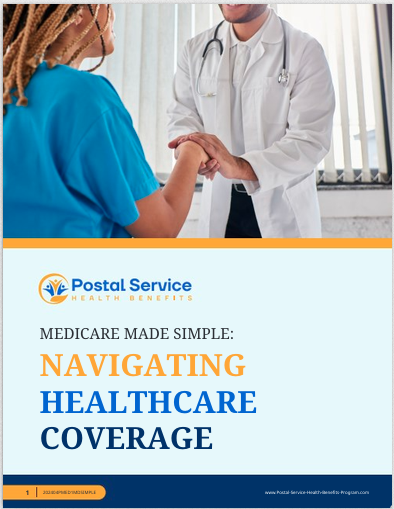Key Takeaways
-
The $2,000 out-of-pocket cap in Medicare Part D brings significant financial relief for high-cost prescription drugs.
-
PSHB enrollees gain enhanced benefits by integrating Medicare Part D into their health coverage.
Understanding the $2,000 Cap in Medicare Part D
The introduction of the $2,000 annual cap on out-of-pocket prescription drug costs is one of the most impactful changes in Medicare Part D for 2025. This change aims to eliminate the notorious “donut hole” and provide financial security for those needing costly medications. For PSHB enrollees, this change comes with additional benefits and considerations worth exploring.
What Does the Cap Mean for You?
If you’re a PSHB enrollee, the $2,000 out-of-pocket limit applies to your prescription drug costs, ensuring that once you reach this threshold, you won’t pay anything more for covered medications within the calendar year. This cap includes copayments, coinsurance, and deductibles but excludes premiums. It’s a game-changer for those managing chronic conditions or needing high-cost treatments.
Beyond just offering a financial cap, this change simplifies healthcare planning for PSHB enrollees. It means you can budget with confidence, knowing that unexpected spikes in drug costs are no longer a concern. Whether managing routine prescriptions or preparing for potential emergencies, the $2,000 cap brings peace of mind to your healthcare experience.
How PSHB Enrollees Benefit from the Change
As a Postal Service Health Benefits (PSHB) enrollee, your prescription drug coverage is integrated with Medicare Part D. This ensures you automatically reap the benefits of the out-of-pocket cap. Additionally, the Employer Group Waiver Plan (EGWP) tied to PSHB plans may offer enhanced drug savings, further reducing your overall costs.
Coordinating PSHB and Medicare Part D
Your PSHB coverage is already tailored to work seamlessly with Medicare. Once you enroll in Medicare Part B and D, your out-of-pocket costs for prescriptions are significantly reduced. For many enrollees, this also means waived deductibles or lower copayments for certain medications. The $2,000 cap adds another layer of savings, ensuring that your annual prescription expenses are predictable and manageable.
Understanding the coordination of benefits between PSHB and Medicare Part D also ensures fewer billing errors and smoother claims processing. By integrating these two systems, PSHB enrollees can focus on their health rather than paperwork or unexpected costs.
The Mechanics of the $2,000 Cap
What Counts Toward the Cap?
All out-of-pocket costs for covered prescriptions, including:
-
Deductibles
-
Coinsurance
-
Copayments
Once these costs add up to $2,000 within the year, the cap is triggered, and Medicare Part D covers 100% of your prescription costs for the remainder of the calendar year.
Costs That Don’t Count
-
Monthly premiums for Medicare Part D
-
Non-covered drugs or over-the-counter medications
Understanding what counts and what doesn’t helps you better plan your healthcare expenses. Knowing these details prevents confusion and allows you to maximize the benefits of your PSHB and Medicare coverage.
Managing Costs Effectively
While the $2,000 cap simplifies your prescription drug costs, there are additional strategies to maximize your savings as a PSHB enrollee.
1. Review Your Annual Notice of Change (ANOC)
Your PSHB plan will send you an Annual Notice of Change (ANOC) detailing any updates to premiums, deductibles, and covered medications. Pay close attention to these changes and adjust your budget accordingly.
2. Use the Medicare Prescription Payment Plan
New in 2025, this payment option allows you to spread out-of-pocket drug costs over monthly payments throughout the calendar year. If reaching $2,000 early in the year seems daunting, this plan ensures affordability and avoids financial strain.
3. Stay In-Network
In-network pharmacies offer lower prices for prescription drugs under Medicare Part D. Use the PSHB plan’s directory to find participating pharmacies. Staying in-network isn’t just about saving money; it’s also about convenience and ensuring that claims are processed quickly and accurately.
4. Leverage Preventive Services
Taking advantage of preventive services covered under your PSHB plan can reduce overall healthcare costs. Screenings, vaccinations, and wellness programs may prevent health issues that lead to costly medications.
Planning for High-Cost Medications
The $2,000 cap is particularly beneficial for enrollees requiring high-cost specialty medications. By reaching the cap early, you’ll avoid further out-of-pocket costs for the rest of the year, offering peace of mind and predictable budgeting.
Discuss Options with Your Healthcare Provider
Your provider can recommend cost-effective alternatives or generic versions of medications. Leveraging these options may delay reaching the cap, preserving your benefits for unforeseen expenses later in the year.
For enrollees managing multiple prescriptions, your provider or pharmacist can assist in creating a cost-effective plan. This approach ensures you’re using your benefits wisely while meeting all your healthcare needs.
Medicare Part B Integration: A Bonus for PSHB Enrollees
If you’re enrolled in Medicare Part B along with Part D, your PSHB plan likely offers additional cost savings. These may include:
-
Waived deductibles
-
Reduced copayments
-
Lower overall costs for medications and medical services
Together, these integrations enhance the value of your PSHB coverage, making healthcare more affordable.
Additionally, the seamless integration between Medicare Part B and D ensures comprehensive coverage for medical and pharmaceutical needs. This means fewer gaps in care and a smoother experience when accessing essential health services.
What Happens When You Reach the Cap?
Once you hit the $2,000 out-of-pocket limit, Medicare Part D takes over completely. This means you pay nothing for covered medications for the rest of the year. However, it’s crucial to:
-
Keep track of your expenses to ensure accurate reporting
-
Use the Medicare Prescription Payment Plan if needed to manage upfront costs
Tracking your expenses becomes even more critical as you approach the cap. Tools and resources provided by Medicare and PSHB can simplify this process, ensuring you’re always aware of your spending and benefits.
Preparing for 2026 and Beyond
While the $2,000 cap is a highlight of 2025, it’s part of broader efforts to make healthcare more affordable. As a PSHB enrollee, staying informed about future changes will help you continue to maximize your benefits.
Embrace Preventive Care
Preventive care services offered through your PSHB plan can reduce the need for costly medications in the first place. Take advantage of free or low-cost screenings, vaccinations, and wellness programs.
Monitor Legislative Updates
Medicare policies evolve, and new caps or enhancements may emerge. Keeping an eye on these changes ensures you’re always aware of how your benefits can be optimized.
Explore Additional Savings Opportunities
Beyond the $2,000 cap, other programs and resources may be available to reduce costs further. These include manufacturer discounts, state assistance programs, and additional PSHB benefits tailored to specific health needs.
Wrapping Up the $2,000 Cap’s Impact on PSHB Enrollees
The $2,000 out-of-pocket cap in Medicare Part D is a milestone for reducing prescription drug costs, and as a PSHB enrollee, you’re well-positioned to take advantage of it. From integrated benefits to new payment options, 2025 brings opportunities for better financial planning and improved healthcare access.
Take full advantage of the PSHB and Medicare Part D integration to ensure your prescription drug costs remain affordable and predictable.






